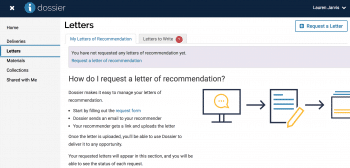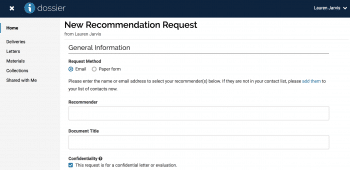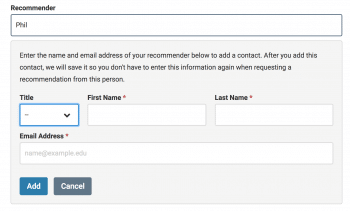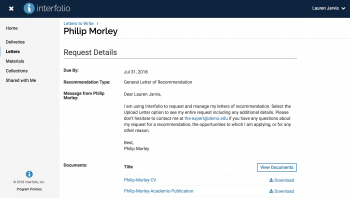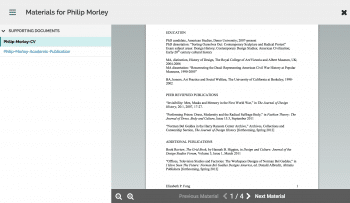This post continues our series, The Smart Scholar.
One of the hallmarks of being a higher education professional is leading and serving on hiring committees. While this work is important to university life, how do you decide if you should serve on a hiring committee? What should your strategy be on selecting members to serve on a hiring committee when you are leading a search? These questions can be difficult to answer as they are nuances based on the position. However, I believe there are some things you should consider when leading and being asked to serve on a hiring committee. While this post does not capture the depth and nuance of hiring committees, below are my more topical tips and suggestions.
Be prepared for a significant time commitment
After serving on several hiring committees and having conversations with colleagues in the field, I have come to the conclusion that serving as the chair of a search committee is a significant time commitment. Not only are you responsible for selecting search committee members, you are also responsible for:
- Serving as main contact for potential candidates with questions
- Coordinating phone/Skype interview times for candidates and committee members
- Coordinating travel for finalist interviews
- Managing personalities of the search committee during candidate deliberations
With the above responsibilities in mind, it is critical to understand and embrace the significant time commitment before agreeing to serve as the leader of a search committee.
I have often been approached to lead and serve on committees unexpectedly. At the beginning of my career, I would often say yes on the spot. However, I was provided sage advice from mentors who explained the benefit of not saying yes right away. The advice given to me (which I pass along to you) is that when offered the opportunity to serve on a hiring committee, communicate to the requestor that you need time to review your schedule to ensure you will have ample time to commit to the search. Taking this approach will buy you a little time to evaluate the time commitment and value-add of serving on a hiring committee.
Establish a diverse hiring committee
Many higher education scholars have pointed out that who serves on search committees determines who is ultimately hired. In many examples, scholars point to the fact that higher education hires do not often reflect the diversity of the country—and this is due to search committees lacking diversity, specifically racial diversity. Thus, when thinking about establishing a search committee, it is important to ensure committee members come from various backgrounds, so your search develops a heterogeneous pool of candidates. Moreover, candidates from different backgrounds can use their networks to get the word out about the search.
Ensure positions are advertised widely
Part of the work of the search committee should be to advertise the position in a way that creates a diverse hiring pool. Search committees do not often get diverse candidates because they do not advertise positions in places where those candidates fellowship. For instance, does your human resource office use the university’s Instagram and Facebook pages to target their hiring advertisements to spaces where diverse candidates spend their time online? Is your search committee reaching out directly to scholars of color to apply for positions? I would argue that institutions search far and wide for athletes, and I believe the same approach should be taken when recruiting higher education professionals. While there are several places to find higher education jobs (which I’ve discussed in a previous Smart Scholar series post), it is critical to find candidates in the spaces they frequent most.
Ensure the search process is ethical
It is important to ensure that the search process is approached ethically, for example adhering to a search process committee where members maintain confidentiality throughout. This prevents candidates who have personal or professional relationships with the search committee members from gaining an advantage in the job search. Moreover, in situations where there are internal candidates applying for a position, this is even more important, as having an ethical process will prevent external candidates from seeking legal action against the institution for a discriminatory hiring process. In response to instances of discrimination and racism on campus, institutions have developed equity and inclusion offices. I would suggest if your institution has such an office, have them talk to the search committee about ensuring an equitable hiring process. If your institution does not have an equity and inclusion office, there are some best practices in the text Diversifying the Faculty: A Guidebook for Search Committees by Dr. Caroline Sotello Viernes Turner.
What have your experiences been on leading and serving on search committees? Feel free to tweet me @ramongoings with your suggestions!
Interfolio’s Dossier enables scholars to collect, curate, polish and send out their materials at all stages throughout their academic professional path. Learn more about Dossier here.
Author Bio: Dr. Ramon B. Goings is an assistant professor of educational leadership at Loyola University Maryland. His research examines gifted/high-achieving Black male academic success PreK-PhD, diversifying the teacher and school leader workforce, and the student experience and contributions of historically Black colleges and universities to the higher education landscape. As a writing coach and editor, Dr. Goings enjoys supporting the scholarly development of doctoral students and professors in higher education. For more information about Dr. Goings, please visit his website www.ramongoings.com and follow him on Twitter (@ramongoings).











